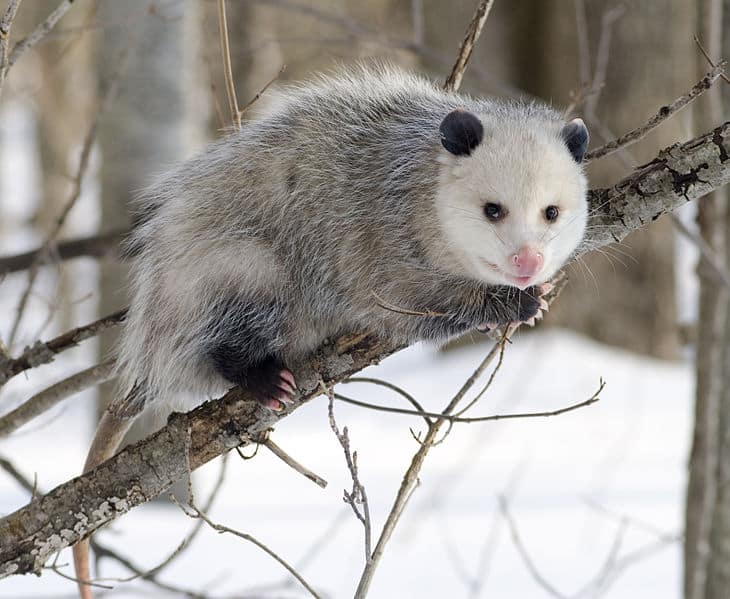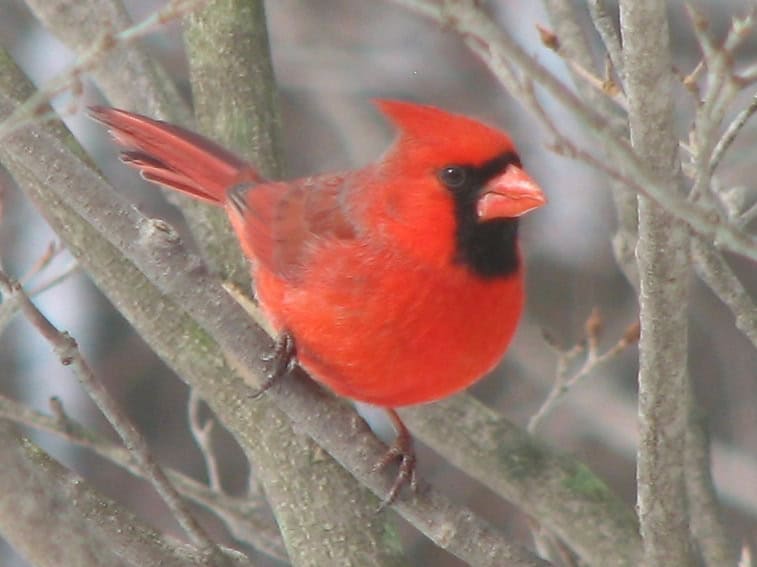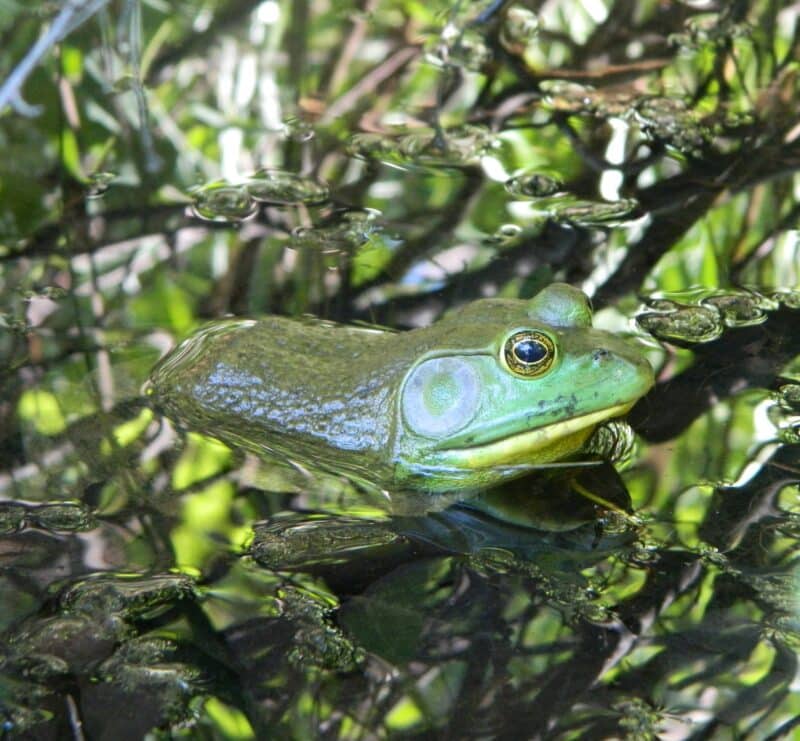Click below to jump to a section on animals in Ohio:
All About Wildlife in Ohio
In these territories, 67 types of vertebrates, 39 types of creatures of land and water, 45 types of snakes, and 219 types of birds live. Among these species are the local whitetail deer, cockroaches, Grieving birds, American bullfrog, snapping turtle, wild bear, coyote, and catamount.
Starting around 1933, the cardinal (cardinalis) has been Ohio’s state bird. When the foremost European pilgrims came to the state in the late seventeenth century, these birds were not typical to the profoundly forested land. Since the new occupants cleared timberlands for the following 100 years, the non-local cardinals moved in and flourished throughout the state.
Three of the most widely recognized warm-blooded animals in Ohio are the Eastern Dark Squirrel, raccoon, and whitetail deer. You can likewise track down American mountain bears, catamounts, and coyotes in the state. The most widely recognized birds are the American crow, robin, blue jay, and grieving pigeon.
The American bullfrog, normal watersnake, and Eastern box turtle are the most effortlessly tracked-down reptiles and creatures of land and water. In Ohio’s lakes, waterways, and streams, rainbow trout, smallmouth bass, yellow roost, and bluegill sunfish are bountiful. Ohio has 75 state parks where you can recognize many of the state’s wild, fantastic, fuzzy, and abnormal species. You can likewise visit safari parks, ranches, farms, and natural life safeguards that exhibit many of the state’s most famous species.
Opossum

Opossums (not to be confused with the possum) are creatures that started in South America and are accepted to have been placed in North America during the Incomparable American Trade, which is the point at which the central lands are associated and is assumed to have happened around 2.7 million quite a while back. It is otherwise called the average opossum. Like different marsupials, these creatures have a pocket where children are kept while they mature. Opossums have 50 teeth, more than other land-based warm-blooded creatures in North America.
Even though they share a comparative name, opossums of North, Focal, and South America are not connected with arboreal marsupials of the suborder Phalangeriformes, which are generally alluded to as possums yet are endemic toward the Eastern Half of the globe.
A warm-blooded animal known as a marsupial, a wholly developed opossum is generally the size of a house cat. Overall, possums, as they are likewise known, measure roughly 2.5 feet long from nose to tail and weigh 8.8 and 13.2 pounds. Generally dark in variety, these creatures have white appearances and long, pointed beaks. Inside their mouths are 50 teeth – more than another land-based well, evolved creatures in North America.
As well as having four short appendages, they use specific tails in various ways. Since these rodents, like bottoms, are fit for holding onto things, they are considered prehensile. Because of this component, opossums can utilize their seats to assist with keeping their equilibrium, support climbing trees, and clutch settling materials while climbing. Youthful creatures use their prehensile hearts to grip their moms’ backs while hefted around.
As opposed to prevalent thinking, notwithstanding, opossums don’t balance topsy turvy from trees by their tails like bats. These vertebrates’ rear legs additionally highlight opposable thumbs, which permit them to clutch branches successfully and significantly more. Guys usually are marginally more extensive than females, and they additionally have more giant canine teeth and will, more often than not, be altogether heavier.
Where to find Opossums in Ohio
Opossums are commonly found in the Ohio region in gardens, backyards, and bins.
Northern Cardinal

Male birds are more attractive in viewing, and because of their excellent looks, they attract many visitors to the Ohio region. They are such beautiful birds that one cannot take their eyes off viewing them. Their body has red color shades, which makes them so attractive. Female birds have a brown color crest, which is very sharp, and ha red color accents.
Cardinals don’t move, and they don’t shed their feathers in the winter season. During the summer season, they whistle in the morning time which is one of the best sounds found early in the morning. There are significantly fewer birds that used to sing songs, but female cardinal birds sing songs when sitting in their nests. This might help the male data about while to carry the meal.
Both male and female birds used to sing son during mating times, but female birds sing Northants, who singa complex songs. Some individuals are bewildered in the spring season seeing a cardinal going after their appearances in vehicle reflect or glossy guard. Birds might go through hours battling these gatecrashers without surrendering. Half a month after the fact, the aggressive chemicals die down; these assaults ought to end (however, some female has this conduct consistently for a long time ceaselessly).
Male bird furiously shields its rearing region from different guys. At the point they see its appearance on the surface of the glass, they often will go through hours battling the fanciful gatecrasher. This bird is the state bird of seven states, so this is one of the official birds. One of the oldest cardinal birds was 15 and nine months of age, found in the Pennsylvania region. North Cardinal is one of the most beautiful red birds with an attractive look.
Where to find Northern Cardinals in Ohio
These are the state bird of the Ohio region. They can be viewed along with other animals in Ohio during the migration season.
North American Bullfrog

Green to greenish brown; bullfrogs of the southern U.S. are frequently spotted; irises of gold or brown; both head and body are straightened and wide. Unquenchable hunger; will eat nearly anything that moves and that it can swallow – including spineless creatures and small vertebrates like warm-blooded animals, birds, reptiles, fish, and even turtles and different frogs.
North American bullfrogs are fit for jumping 1 to 2 m (3 to 6 ft). North American bullfrogs are regional and safeguard their domains by calls, shows pursues, hop assaults, and in any event, wrestling. Females are drawn to guys with regions that give the most food. A female North American bullfrog can lay up to 25,000 little eggs kept intact at the outer layer of the water.
Hearing is one of the leading faculties of a frog. Male North American bullfrogs ensemble at rearing lakes; females likewise give destructive response calls. North American bullfrogs have teeth at the top of their mouth and a strong tongue equipped for flipping prey into their mouth. North American bullfrogs might stay at the fledgling stage for two years. A more extended fledgling stage implies an enormous frog after transformation, which typically means an excellent opportunity for endurance. North American bullfrogs close their noses and retain oxygen through their skin while submerged.
By and large, frogs have smooth skin, while amphibians have finished skin. Where North American bullfrogs usually happen, they are normal and assist with holding populaces of bugs in line. Yet, they have been brought into the region of the western U.S., where, due to their craving, they are equipped to diminish or eradicate nearby populations of local species.
Their populaces can increment to become out of offset with the species local to those territories because they are frequently male hunters, and their skin emissions make them unpalatable to numerous creatures. Bullfrogs, similar to all animals of land and water, have permeable skin and answer rapidly to changes in the climate. The well-being of their populaces can be a sign of the soundness of the environment.
Where to find North American Bullfrogs in Ohio
They are mainly found in various regions of the USA like Nova Scotia, the east part of Canada, Rockies plains.
Wild Turkey

The wild turkey is an enormous ground-abiding bird 36-44 creeps long. It has a vast, fan-formed tail; long, stocky pink or dark legs; short, adjusted wings; an exposed head and neck and a little, down-bending bill. The wild turkey has brilliant bronze body plumes and high contrast bars on its wings. The male wild turkey has a tuft of quills called a facial hair growth on his chest and an upwardly bending prod on his lower legs. His bosom feathers are tipped with dark, and he has a somewhat dim blue neck and a red wattle (a meaty flap of skin that dangles from the neck or jaw.)
The male’s uncovered head and neck are red, blue, or white, contingent upon the season! The female’s bosom feathers are tipped with brown, white, or dim. She doesn’t have spikes and generally doesn’t have facial hair growth. she has a fuzzy head and a padded neck. Guys usually are more significant than females. In the east, the tip of the turkey’s tail is brown, and in the Southwest, the tail tip is white. The wild turkey lives in hardwood and blended conifer-hardwood woods with openings like fields, fields, plantations, and swamps.
Furthermore, wild turkeys are omnivores, eating oak seeds, nuts, natural products, bugs, buds, greenery fronds, and lizards. They mainly scavenge on the ground in groups, scratching the earth to uncover food. The wild turkey takes care of during the day and perches in trees around evening time. The wild turkey is one of just two North American birds that has been trained! The other is the Muscovy duck. Toward the end of the nineteenth 100 years, the wild turkey had been pursued nearly to termination in many of its unique reach. The wild turkey has been restored in much of its unique space.
Where to find Wild Turkeys in Ohio
They are primarily found in the eastern part of Ohio and other animals in Ohio. They are found in forests and agricultural farms or fields.
Blue Catfish

Blue catfish can be found in the waters of many seaside and inland states. Local to the Mississippi, Missouri, Ohio, and Rio Grande waterway bowls, they have been acquainted with different regions, fundamentally to act as a sporting fishing objective. Numerous fishermen like looking for blue catfish since they are solid, keen fish, which is a decent test. However, in certain areas, blue catfish can present significant difficulties. Blue catfish were acquainted with several streams in the Chesapeake Straight watershed many years prior.
It was believed that these fish just lived in exceptionally new water. Yet, they can endure water that isn’t new. That implies they can swim out of one stream, into the harsher Straight, and afterward into an alternate genuinely new waterway. Subsequently, these fish have extended their reach all through the Chesapeake. They develop hugely and eat numerous local species so that they can hurt the Chesapeake Straight biological system.
Fortunate for people, they are delicious and a decent wellspring of sustenance. States in the Chesapeake Inlet watershed are cooperating to support sporting looking for these catfish — and to create and grow a business fishery. Blue catfish have a level dorsal blade and a profoundly forked tail. They are shimmering blue in variety with a white stomach. Their smooth skin needs scales.
Blue catfish have four sets of dark hair-like barbells around their mouths. While grown-ups typically develop to be under 2 feet long, they can grow to be 5 feet long and weigh over 100 pounds. Blue catfish can produce around 100 pounds; one trapped in an inland lake on the Virginia-North Carolina line weighed 143 pounds. Blue catfish are exceptionally useful and make large quantities of posterity in each regenerative cycle.
They produce once yearly from late May to June, mostly in lower-saltiness streams and more modest feeders. Females have 4,000 to 8,000 eggs for every kilogram of body weight — so a 10-pound fish could deliver more than 20,000 eggs. Blue catfish are dominant hunters of Chesapeake feeders; they are pioneering and generalist hunters, benefiting from significant local fish like menhaden, shad, stream herring, blue crabs, plants, and bugs. Grown-up blue catfish do not have many regular hunters in the Chesapeake Straight.
They are among the favored prey of osprey and bald eagles. Blue catfish are local to the Mississippi, Missouri, Ohio, and Rio Grande waterway bowls. Blue catfish have been loaded as a sporting catch in 20 states. These catfish have spread through the Chesapeake Inlet watershed in practically no time into virtually every significant feeder. They are bottom feeders that lean toward enormous waterways with profound channels, quick flows, and sandy bottoms. Blue catfish lean toward fresher water but can flourish in higher salinities too. This permits them to move through various pieces of the Chesapeake Straight, where they communicate with businesses and environmentally significant species. They have been archived, impeding gill net fisheries like striped bass.
Where to find Blue Catfish in Ohio
They are found in Cincinnati’s rivers, lakes, ponds, and streams. They are also found in the southwest region of Ohio alongside other animals in Ohio.
Summary of Animals in Ohio
In the Ohio region, one can find a wide variety of animals. Around four habitats are located in the Ohio region: wetlands, prairies, forests, and lakes. There are about 67 mammal species; amphibians are about 39 in number, snakes are 45 in number, and around 219 different types of birds.
If you enjoyed reading the above on Ohio animals, check out Oklahoma and Pennsylvania animals next!
Join our Forum for free today!

- These are The 5 Largest Great White Sharks Ever Recorded - July 19, 2024
- The Surprising Benefits of Big Game Hunting - July 18, 2024
- $100k+ Hunting Experiences The Most Expensive Animals to Pursue - July 17, 2024





